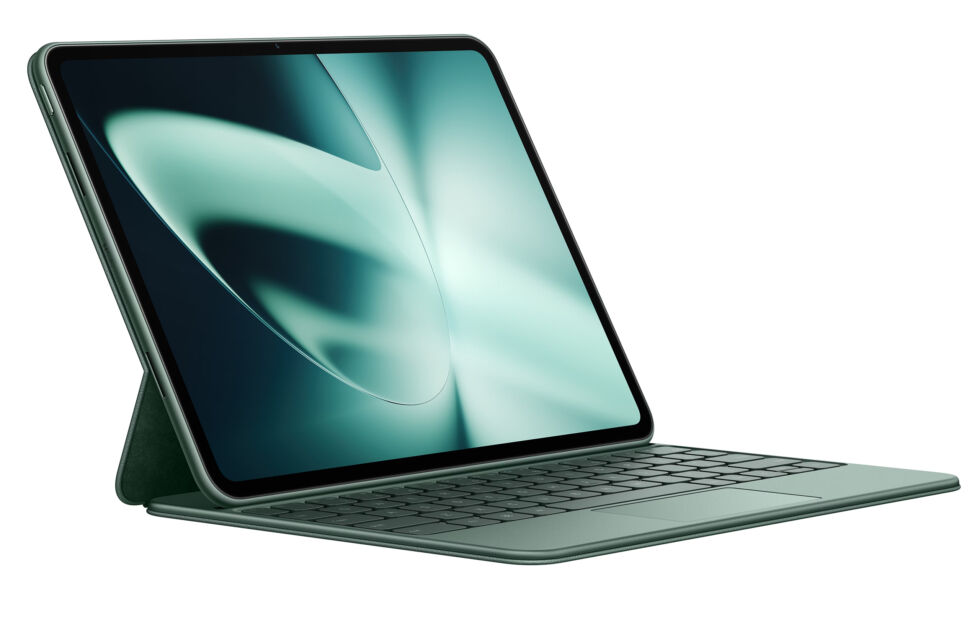OnePlus takes on the iPad with the OnePlus Pad
-

The OnePlus Pad doing its best iPad Pro impersonation.
Android tablets are on their way back, and one of Android's biggest manufacturers (we're talking about OnePlus parent company BBK) is bringing an Android tablet to the US for the first time. Say hello to the OnePlus Pad, an 11.61-inch tablet with an optional keyboard and stylus. We don't know how much it costs, so don't ask. There's also no hard release date, but preorders start in April.
What we do know are the specs. The 11.61-inch display is a 144 Hz LCD, with a resolution of 2800×2000. That's an aspect ratio of 7:5, or a bit wider than a 4:3 display, which OnePlus claims is a "book-like" aspect ratio. The SoC is a MediaTek Dimensity 9000. That's a rarity in the US, but it's basically a generic ARM design for 2022 flagship phones, with one 3.05 GHz ARM Cortex X2 CPU, three A710 CPUs, and four A510 CPUs. It's a 4 nm chip with an ARM Mali-G710 MC10. You also get 8GB of RAM (there's an option for 12GB), 128GB of UFS 3.1 storage, and a 9510 mAh battery. This is not in the super-flagship tablet territory and should (hopefully) come with an affordable price tag.
As always, OnePlus' trademark quick-charging is here, and it's 67 W. On a tiny phone battery, that kind of charging will usually take a phone from 0-100 in around a half hour, but with a big tablet battery, a full charge still takes "just over 60 minutes." In the fine print, OnePlus actually gives a warning against any repair attempts, saying, "The battery has been especially encrypted for safety purposes. Please go to an official OnePlus service center to repair your battery or get a genuine replacement battery." I've never heard of a battery being "encrypted" before, but I think they mean there is a serial number check in the firmware somewhere and that it will presumably refuse to work if you replace it. As for the possibility of an "official OnePlus service center" actually existing, there is a business finder on the OnePlus India website, but not one in the US, so it's looking like mail-in service only.
Read 2 remaining paragraphs | Comments
from Tech – Ars Technica https://ift.tt/FcBHMYb
Comments
Post a Comment